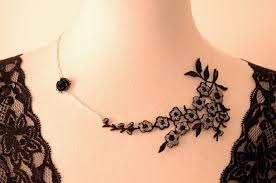Recently I have taken up drawing in pen and ink as an inexpensive, relaxing, creative activity. I have never been much of a “classic” artist, but I figured that there are a lot of styles and techniques out there, and with some practice I could be good one.
No matter what technique of drawing you use, one of the most important basic concepts to employ is what I call “seeing in shapes.” This is when you can look at a model of what you are drawing, or lay out your drawing in the shapes it is broken down in first.
It can be overwhelming to dive right into a massive landscape, for example, with intricate details and colors. However, when you see in shapes it becomes much more manageable. Even drawing something simple, breaking it down into shapes can be very helpful.
Let’s take this flower:
Now break it down. It should look something like this:
It’s not the most beautiful or accurate flower in the world, but it has good shape to be the building blocks of whatever your personal style is. From here, this flower can become a realistic study, a cartooned delight, a modern reinterpretation, etc. With good bones, this flower can become good art.
Friday, April 4, 2014
Thursday, April 3, 2014
Cats and Crafts
Cats are the most dangerous natural predator to the unsuspecting craft. Many an innocent crochet project has been turned to nothing better than a tangled mess of string and broken dreams in the vicious paws of these ferocious beasts. However, every once in a great while, the crafts manage to outsmart their nemesis, besting it while it lays bloated on expected victory.
Observe the cat and its prey in their natural habitat: my kitchen table.
The cat lays atop its latest conquest: fabric laid out to be cut.
Sated and filled with the glorious fruits of victory, the cat dozes...
This was a mistake! The crafts choose this time to strike, when the cat is vulnerable and unsuspecting.
Pinned down by pattern pieces and his own treacherous pride, the cat cannot put up a defense. Soon, he is rendered blind.
Helpless and trapped, the crafts proceed to consume the cat, turning nature on its head in an epic and mysterious circle of life.
***No animals or crafts were hurt in the making of this documentary.***
Observe the cat and its prey in their natural habitat: my kitchen table.
The cat lays atop its latest conquest: fabric laid out to be cut.
Sated and filled with the glorious fruits of victory, the cat dozes...
This was a mistake! The crafts choose this time to strike, when the cat is vulnerable and unsuspecting.
Helpless and trapped, the crafts proceed to consume the cat, turning nature on its head in an epic and mysterious circle of life.
***No animals or crafts were hurt in the making of this documentary.***
Wednesday, April 2, 2014
Balance
A short note about the artistic concept of Balance. Balance is defined as the way in which the elements of a piece are arranged. Balance can be symmetrical or asymmetrical, and is used in absolutely all craft designs, whether you realize it or not.
Symmetrical balance is usually considered more formal, classic, and stately. This is when all elements are laid out with equal weight such as in this picture:

Asymmetrical balance is less formal, and, depending on the extent of the asymmetry, can be whimsical, or downright absurdest. Asymmetry also tends to make a piece feel more dynamic. This is when elements of the design are laid out with varying weights and proportions such as in these pictures, arranged from least to most asymmetrical:



There are, of course, more design elements involved in balance than just symmetry or lack thereof, but it is a good place to start. Once you decide the overall balance of a piece, you can worry about radial or lineal symmetry, space and color. Planning out the balance of a piece can help to find your artistic voice, and convey it more clearly.
Symmetrical balance is usually considered more formal, classic, and stately. This is when all elements are laid out with equal weight such as in this picture:

Asymmetrical balance is less formal, and, depending on the extent of the asymmetry, can be whimsical, or downright absurdest. Asymmetry also tends to make a piece feel more dynamic. This is when elements of the design are laid out with varying weights and proportions such as in these pictures, arranged from least to most asymmetrical:

There are, of course, more design elements involved in balance than just symmetry or lack thereof, but it is a good place to start. Once you decide the overall balance of a piece, you can worry about radial or lineal symmetry, space and color. Planning out the balance of a piece can help to find your artistic voice, and convey it more clearly.
Subscribe to:
Posts (Atom)






